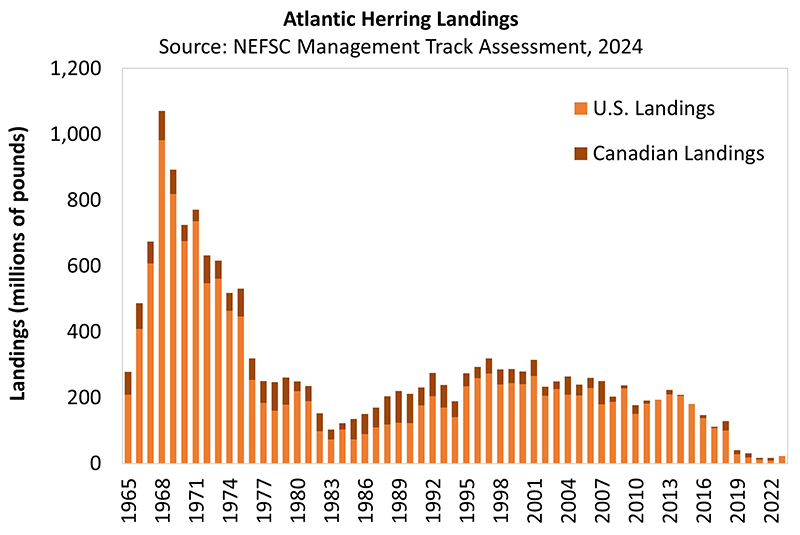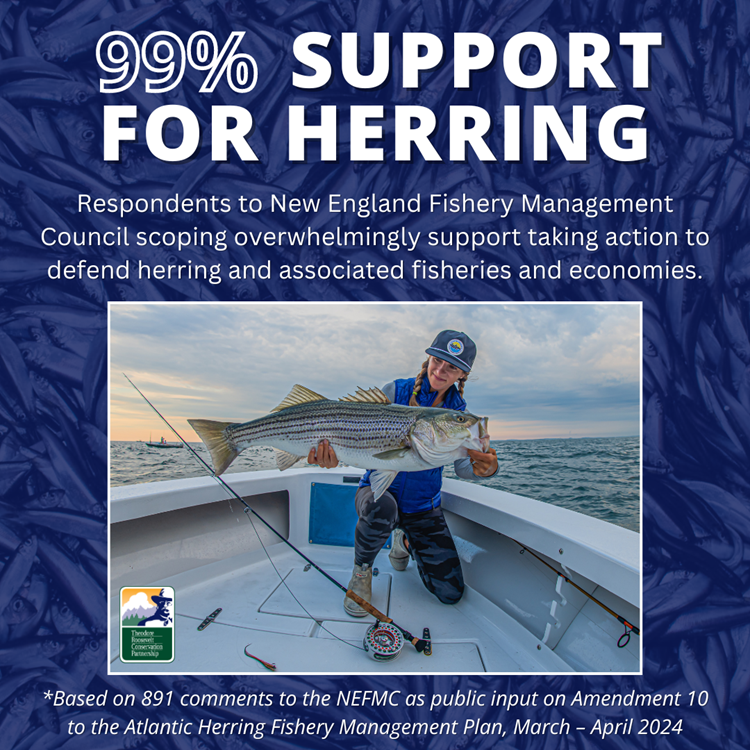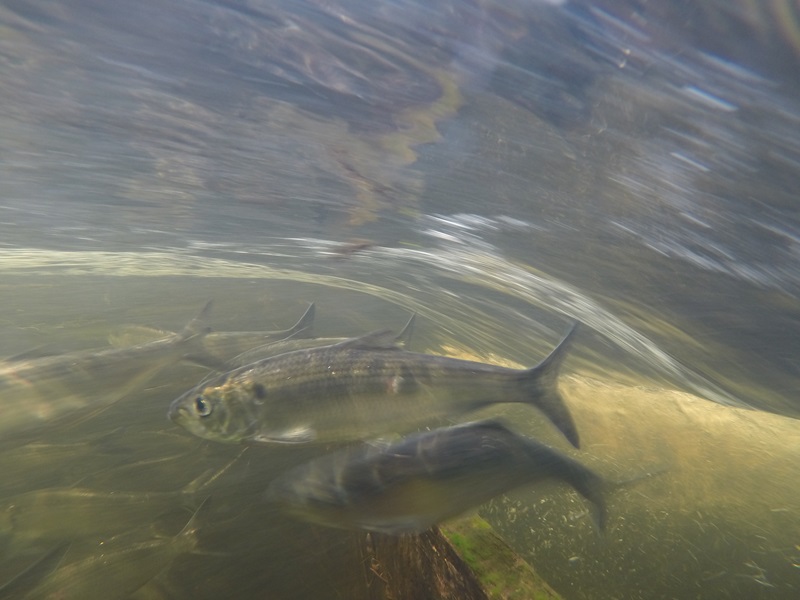The Atlantic herring stock is still overfished, and recent public scoping shows that a vast majority of stakeholders favor stricter management measures to support rebuilding
New England anglers out on the water this summer wondering when they’ll find that next big school of herring to use as bait to score a trophy bluefin or striper might want to stick with using menhaden instead. At the end of June, NOAA Fisheries published the 2024 stock assessment update for Atlantic herring, and unfortunately the results show that little progress has been made toward rebuilding a herring stock that has been in decline for many years. A good visual depiction of how the Atlantic herring population has been in decline for decades is the NOAA graph below, which charts how commercial landings have plummeted over the last six decades.

This new stock assessment further validates the work the Theodore Roosevelt Conservation Partnership and its partners have been doing to support a new amendment to the Atlantic Herring Management Plan – Amendment 10 – to address user conflicts with anglers, attain optimum yield in the fishery, improve herring’s conservation status, and ensure that access to a healthy herring population is available to all stakeholders.
Herring Population Well Below Target
The 2024 assessment, which incorporated updated catch data, survey information, and life history parameters through 2023, indicates that the Atlantic herring stock is still overfished, but overfishing is not occurring. This essentially means that the overall size of the herring population is still far below its target level, despite fishing pressure being low enough that the stock should be able to replenish itself naturally. The data showed that the adjusted spawning stock biomass (SSB) was approximately 48,000 metric tons, or just 26 percent of the biomass target. For reference, the previous stock assessment estimated the 2021 herring SSB at 39,000 metric tons, or 21 percent of the biomass target, compared to the early 2000s when the SSB was over 200,000 metric tons, or over 1 million metric tons in the late 1960s. That’s more than 20 times what we are seeing today.
The likelihood of Atlantic herring meeting the 2025 rebuilding target is less than 1 percent.
Thus, herring are experiencing chronic circumstances that prevent them from recruiting enough younger fish to rebuild their population to a sustainable level for a thriving Northern Atlantic ecosystem, much less a thriving directed fishery. The stock’s rebuilding projections remain uncertain according to the latest data, and the likelihood of meeting the 2025 rebuilding target is less than 1 percent.

Advocacy Offers Hope
The recent assessment may sound bleak, but not all hope is lost. Since 2023, the TRCP and partners have been involved in moving Amendment 10 to the Atlantic Herring Management Plan forward with the New England Fishery Management Council (NEFMC). The amendment is intended to address potential management changes, such as spatial and temporal restrictions for the Atlantic herring trawl fleet, to minimize conflicts with recreational anglers, charters, and other stakeholders; contribute to optimum yield; and support rebuilding of the herring resource. The NEFMC will also take action through Amendment 10 to address incidental catch of river herring and shad by the herring trawl fleet to better support ongoing coastwide restoration efforts for these species.

Thank you to those of you who contributed during the public comment period for Amendment 10 scoping in March and April, via spoken comments at scoping hearings or written comments submitted online. A full summary of scoping comments can be found here, but highlights include:
- More than 99 percent of respondents were in support of further management actions to defend herring and supported economies. Of 891 people who commented, 795 did so on behalf of themselves and/or businesses, and only 6 comments did not support Amendment 10 action.
- The public’s preference for potential new management measures via Amendment 10 include spatial/temporal measures (such as buffer zone variations, time/area closures to reduce river herring and shad incidental catch, and herring spawning area protections), gear restrictions in Stellwagen Bank National Marine Sanctuary, and increased observer coverage on commercial herring vessels.
- Ideas for data sources that the NEFMC could use to develop alternative measures were provided by the public, which included data collected by local Tribes, mapping overlap analyses, public survey data, and Vessel Monitoring System (VMS) data.

What’s Next?
Rest assured, the TRCP and partners will continue to advocate for Amendment 10 moving forward to develop management alternatives for the Atlantic herring fishery that adequately address ongoing user conflicts, decrease incidental catch of river herring and shad, and contribute to optimum yield of herring for all who want to access this vital public resource. Next steps for Atlantic herring management at the NEFMC include:
- The NEFMC Atlantic Herring Plan Development Team (PDT) and Technical Committee will meet July 9 to discuss the stock assessment update.
- The Scientific and Statistical Committee will meet July 30-31 to recommend overfishing limits and acceptable biological catch for the 2025-2027 fishing seasons, based on the stock assessment results.
Amendment 10 will be on hold while the NEFMC focuses on the above fishing season specification-setting process over the summer. In the fall and winter months, the PDT will begin to analyze available data and develop potential management alternatives for Amendment 10, which will be reviewed by the Council.
If you’d like to stay involved in the Amendment 10 process, please fill out this user conflict survey (and share with all your friends!) that will be submitted to the NEFMC to help identify areas of high conflict between the directed fishery and other users of the herring resource: https://tinyurl.com/atlantic-herring-survey

Banner image credit 16:9Clue




